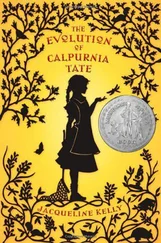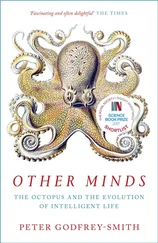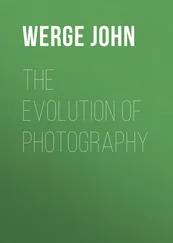When people passed from a hunting existence to pastoral-ism without any intervening stage of peasant agriculture, as the Semites did, these ideas were retained, since moon changes were very significant to livestock tenders. It is therefore not surprising that the early Semite pastoralists knew the moon as a male deity, sometimes called Sin, and knew the sun as a goddess, frequently called Shapash. These ideas, like the Semites themselves, came into Mesopotamia.
The Highland Garden peoples, as we have indicated, had quite different ideas, since they regarded the female as more important than the male in economic and social life, and had as their chief deity the earth mother goddess. The sun, which was of secondary importance to the earth, was male, if it was regarded as a deity at all.
When the neolithic peasant peoples developed civilizations in the alluvial river valleys, males became more significant in their social, economic, and political life, and the sun became much more significant in their economic activities. In religion this served to reduce the earth goddess to a secondary role and make a male solar deity of primary significance. But this whole development was much confused by the persistent intrusion of Semite religious ideas in which the moon was male and of more importance. The rather chaotic ideas on these matters to be found in Mesopotamia in the historic period were thus a consequence of cultural mixtures, and not a reflection of incapacity to think clearly.
2. Gestation
Since the Stage of Gestation is, by definition, a period in which nothing sensational happens, it is not an easy period to discern in the prehistoric evidence. If we assume that the first agriculturalists came into Mesopotamia about 6000 B.C., we might postulate a period of mixture for about a thousand years and a period of gestation about half as long. In this period a new way of life different from the Neolithic Garden culture existed. Sedentary existence for centuries in one area would have reduced game and made hunting of little importance. On the other hand, especially in the more humid southern valley where there was abundance of grass and reeds, the care of domestic animals would have increased in importance. As long as hoe culture continued as the normal method of tillage, this probably remained a largely feminine occupation. Thus the neolithic society where women generally tilled the soil and men hunted, or did little, was superseded by a new culture where men became active contributors to economic life, caring for domestic animals. As a consequence, dairying became of great significance, eventually with powerful religious overtones, and the social superiority of women was reduced. This rise in the position of men was increased by the appearance of the Sumerian priesthood, which must have been a predominantly masculine organization, since idly looking at the heavenly bodies or speculating on the relationships between their movements and earthly events is not something busy females would be likely to do. It would be much more likely to be found among watchers of herds than among those whose eyes are directed downward in daylight hoeing of the soil.
The growth in importance of animal care may also have resulted in clearer recognition of the male role in reproduction. Where the neolithic culture had regarded women as productive, both of crops and of children, the new Mesopotamian culture came to recognize the male role in production of both. This, in time, led to a shift in religious emphasis from fertility to virility. The symbol of the former had been the earth mother, represented by a female figurine, or simple torso, of clay, usually shown as pregnant and always shown as excessively female; the symbol of virility now came to be symbolized by the bull. This does not mean that the older ideas of fertility and the earth mother were abandoned, but that they were supplemented, and, to some extent, eclipsed by newer ideas. The earth mother was given a son, who was also her lover, a heavenly bull, who was associated with the periodicity of the year and thus with the sun. As the sun came and went, and the crops died and were reborn, so this new male god of growing things and of life's vigor died and was reborn annually. His mother, like all women, was associated with the moon in a monthly cycle. In time the symbol of the dying god became the sun's disk, while that of the earth mother became the moon, either as circle or as crescent. These two gave rise to a large number of paired symbols that together stood for the productiveness of natural processes of birth and decay. The sun bull became equivalent to the high-flying eagle or falcon, while the earth cow became equivalent to the crescent ship or to the earth's intimate, the snake. The life-giving subterranean waters of the earth mother were given symbolic fertility by representing the dying god as a fish in these waters. Or, by a similar juxtaposition, the swelling mound of earth that stood for the productive female principle was made fertile by inserting in it a rod, or a pole, a pillar or a tree. In Egypt, where the mound of earth became a pyramid, the pillar became an obelisk. The pubic triangle, sharply marked on the torso figurines of the earth mother, was made into a more powerful symbol of productive force by attaching to the triangle a rod representing the male principle. This combination of triangle and rod came to be regarded as an ax symbol, one of the most pervasive archaic representations of natural productiveness and power.
These new religious ideas, in their generalized forms, were widely diffused. They included the belief that death was an essential preliminary to resurrection, both for men and for crops, and the idea that reproduction, of children through sex and of crops from planting, were but two aspects of the fruitful relationship of two pervasive principles of fertility and virility. The deities associated with these ideas are known, in general terms, as the earth mother goddess and the dying god.
Babylonian Ishtar had a consort, Tammuz; Egyptian Isis had Osiris; Syrian Astarte had her son Adon; Anatolian Cybele had a son Attis; the Cretan Rhea had a son Zeus (who became confused, in character and name, with the pastoral sky god of the Northern Flatlands). In Greece and Rome, where Indo-European ideas were powerful, there was considerable confusion of these ideas: the sexual aspect became separated from the vegetation aspect, one being associated with Aphrodite, or Venus, and her lover, Adonis, while the other was associated with Demeter, or Ceres. In Greece the old oriental legend of the dying god became the familiar story of Demeter and her daughter Persephone, whose annual visit to Hades caused the death of vegetation in the summer season.
Changes such as these are not easy to document from the archaeological record since they are not material, but they clearly must be inferred to explain the evidence of the later period, when the invention of writing makes it possible to obtain clearer records of ideological developments.
These changes, which we can postulate for the Ages of Mixture and Gestation, were greatly influenced by the development of the Sumerian priesthood. It is extremely likely that the importance of this priesthood was organizational rather than religious or ideological at first. By 4500 this organizational significance was fully established: a new, separate group had emerged in Mesopotamian society, and this group was accumulating control of wealth beyond its own immediate consumption needs, and using this surplus to command the resources of production into capital projects. It is not clear to us how this development took place, nor why it occurred at numerous different sites in Mesopotamia, but the consequences of it are quite evident: society was launched into an Age of Expansion.
3. Expansion
Читать дальше










